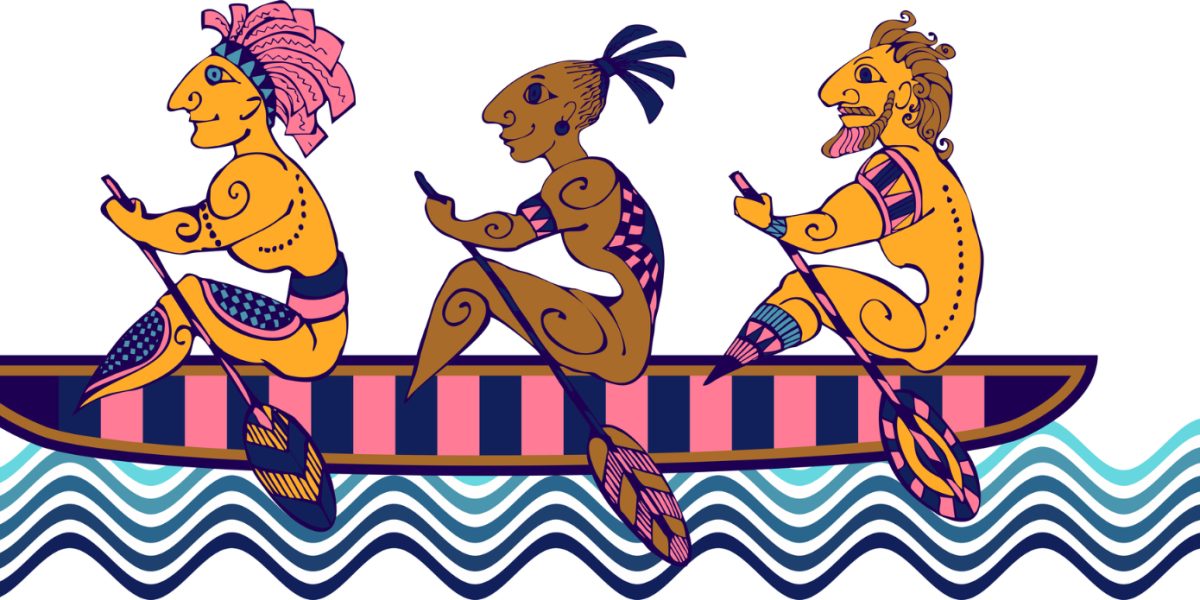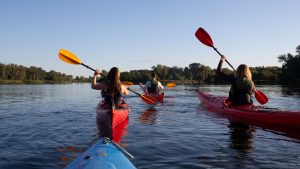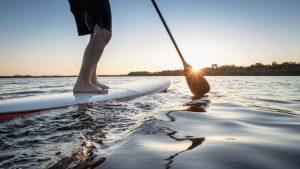You may enjoy paddling around the Gulf of Mexico or nearby lakes and rivers. Did you ever think about where these two sports come from? They both go back in history when getting around by water was a necessity. It was also crucial for food gathering, allowing hunters to fish and bring the food home. The next time you rent a canoe or kayak, think back to their extensive history and the sagas behind their use.
The History of the Canoe and Kayak
Here are some frequently asked questions about the history of present-day sporting equipment that has been handed down through generations.
Canoes
How old are the first canoes?
Excavations in the Netherlands show that they were used between 8200 and 7600 BC. With the pesse canoe holding the title of the oldest, later excavations in Denmark show the use of paddles and dugouts dating from the Ertebølle period (c. 5300–3950 BC).
What were the first canoes made from?
One of the oldest canoes is the Dufuna canoe, found in Nigeria. The dugout canoe was made from a single piece of wood, either carved out from a tree trunk or made from a single slab.
Why were canoes so crucial to the Pre-Columbian Caribbean?
They were the only means of reaching the islands if traveling from the mainland. History shows that in 3500 BC, ancient Amerindian groups colonized the first Caribbean Islands. This was possible through the use of their single-hulled canoes.
Did the first canoes have sails?
This is still in dispute. There were no sails by the time the Europeans arrived in the Caribbean.
When did canoes appear in North America?
Native Americans made dugout canoes for whale hunting, salmon fishing, and seal hunting.
Kayaks
What were the first kayaks made from?
The indigenous tribes of the Inuit and Aleut built two types of light kayaks. They were made from materials found in their environment, such as animal bones, wood, and animal skins.
How did the indigenous people make their lightweight kayaks strong?
They used the fat of animals to make these lightweight kayaks stronger. Whale fat gave a waterproof coating to the kayaks, which otherwise were not very durable.
How did they add more buoyancy to these kayaks?
The indigenous people used the bladders of seals, which they filled with air. This also added control to the kayak, while improving wear and deterioration.
What was the purpose of the first kayaks?
They were used for hunting; a fascinating fact is that the name kayak means “hunter’s boat.” Later, kayaks, called “umiaqs,” were much larger and were used to transport families.
When did kayaks reach Europe?
The Germans and French were the first to try kayaking as a sport. This was in the mid-1800s. Later, kayaks were used for the exploration of the North and South Poles, as a means of battling the icy waters.
What is a recent innovation in the kayak?
The first fiberglass kayak was invented in the 1950s. This led to the design of their hulls to suit different environments. Today kayaks are used in whitewater as well as calmer waters, such as the Gulf of Mexico.
Whether you do it by kayak or canoe, exploration of the water is still in style. From delighting in mangroves to seeing manatees and dolphins, getting around on the water is popular today. Although their purpose may no longer be hunting and gathering, canoes and kayaks offer abundant fun.







